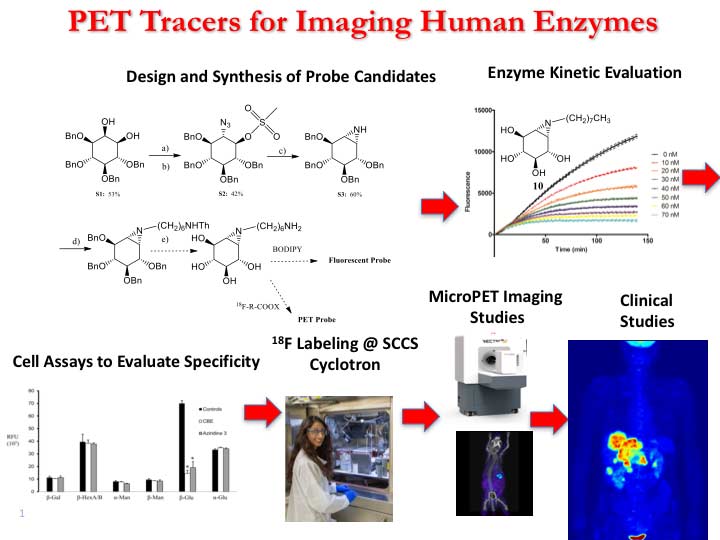Research
Phenix Research Group Summary
Dr. Phenix (Assistant Professor in Chemistry) has established his research program dedicated to rationally designing novel compounds for imaging hydrolytic enzymes with PET. In particular, we are developing novel radiotracers for imaging cysteine cathepsins which are important diagnostic and therapeutic targets in cancer and Alzheimer’s disease. Another main focus of our program is to develop radiotracers for imaging Glucocerebrosidase, a high priority biomarker and therapeutic target in Parkinson’s disease. Once we have developed these radiotracers, a PET method could be used to understand how these enzymes are involved in disease promoting processes while also providing an indispensable tool for drug discovery enabling us to determine target occupancy of experimental drugs and assist in patient selection during clinical trials (e.g. companion diagnostics). In addition, we are developing innovative biological chemistry approaches in order to trap radiopharmaceuticals at the site of enzyme activity that could be applied to virtually any hydrolytic enzyme inside a living animal or person.
Our lab has expertise in synthetic chemistry, enzymology to rationally design and test new ligands and substrates of enzymes as well as conducting robust cell culture experiments to evaluate the kinetic efficiency, selectivity, cell trapping and cell membrane permeability of potential radiotracer candidates. In addition, we routinely conduct radiochemistry, biodistribution and PET imaging studies on small animal models of disease.
We are also involved in several collaborative projects on campus including: 1) radiolabeling abscisic acid, a well-known plant hormone produced in response to drought and other abiotic stresses in crops. We will use PhytoPET as a tool to phenotype various strains in collaboration with Sue Abrams (Chemistry, USask) and Eiji Nambara (Cell & Systems Biology, U of T), 2) imaging the distirubtion of OIF in llama's to understand induced ovulation with Gregg Adams and Rodirgo Carrasco (Western College of Vet Med) and 3) designing novel probes for understanding MAO biology Darrell Mousseau (Pathology, USask).

